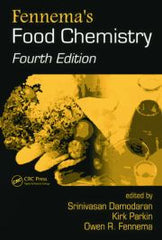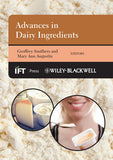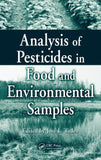Fennema's Food Chemistry, Fourth Edition By Srinivasan Damodaran, Kirk L. Parkin, Owen R. Fennema
Fennema's Food Chemistry, Fourth Edition
Features
Summary
This latest edition of the most internationally respected reference in food chemistry for more than 30 years, Fennema’s Food Chemistry once again meets and surpasses the standards of quality, comprehensive information set by its predecessors. This edition introduces new editors and contributors, who are recognized experts in their fields. All chapters reflect recent scientific advances and, where appropriate, have expanded and evolved their focus to provide readers with the current state-of-the-science of chemistry for the food industry.
The fourth edition presents an entirely new chapter, Impact of Biotechnology on Food Supply and Quality, which examines the latest research in biotechnology and molecular interactions. Two former chapters receive extensive attention in the new edition including Physical and Chemical Interactions of Components in Food Systems (formerly “Summary: Integrative Concepts”) and Bioactive Substances: Nutraceuticals and Toxicants (formerly “Toxic Substances”), which highlights bioactive agents and their role in human health and represents the feverish study of the connection between food and health undertaken over the last decade. It discusses bioactive substances from both a regulatory and health standpoint.
Retaining the straightforward organization and detailed, accessible style of the original, this edition begins with an examination of major food components such as water, carbohydrates, lipids, proteins, and enzymes. The second section looks at minor food components including vitamins and minerals, colorants, flavor, and additives. The final section considers food systems by reviewing basic considerations as well as specific information on the characteristics of milk and the postmortem physiology of edible muscle and post-harvest physiology of plant tissues. Useful appendices provide keys to the international system of units, conversion factors, log P values calculation, and the Greek alphabet.
Table of Contents
Introduction to Food Chemistry, O.R. Fennema, S. Damodaran, and K.L. Parkin
Major Food Components
Water and Ice, D.S. Reid and O.R. Fennema
Carbohydrates, J.N. BeMiller and K.L. Huber
Lipids, D.J. McClements and E.A. Decker
Amino Acids, Peptides, and Proteins, S. Damodaran
Enzymes, K.L. Parkin
Minor Food Components
Vitamins, J.F. Gregory III
Minerals, D.D. Miller
Colorants, S.J. Schwartz, J.H. von Elbe, and M.M. Giusti
Flavors, R.C. Lindsay
Food Additives, R.C. Lindsay
Bioactive Substances: Nutraceuticals and Toxicants, C.T. Ho, M.M. Rafi, and G. Ghai
Food Systems
Dispersed Systems: Basic Considerations, P. Walstra and T. van Vliet
Physical and Chemical Interactions of Components in Food Systems, Z.E. Sikorski, J. Pokorny, and S. Damodaran
Characteristics of Milk, H.E. Swaisgood
Postmortem Physiology of Edible Muscle Tissues, G. Strasburg, Y.L. Xiong, and W. Chiang
Postharvest Physiology of Edible Plant Tissues, J.K. Brecht, M.A. Ritenour, N.F. Haard, and G.W. Chism
Impact of Biotechnology on Food Supply and Quality, M. Newell-McGloughlin
Appendices
Appendix A: International System of Units (SI), The Modernized Metric System
Appendix B: Conversion Factors (Non-SI Units to SI Units)
Appendix C: Greek Alphabet
Appendix D: Calculating Relative Polarities of Compounds Using Fragmental Constant Approach to Predict Log P Values.
Index


















